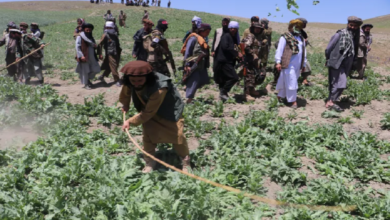Funding drought forces UN food agency to cut rations in Afghanistan
The World Food Programme (WFP) appealed for urgent funding for its operations in the country, where families are battling crisis after crisis, including growing hunger, since the Taliban takeover of 2021.
Catastrophic hunger could become widespread across Afghanistan, and unless humanitarian support is sustained, hundreds of thousands more people will need assistance to survive, the agency said in an alert.
Due to funding constraints, at least four million people will receive just half of what they need to get by in March. Ss food stocks have run out before the next harvest is due in May, this is traditionally the most difficult time of the year for rural families, WFP said.
The cuts come at a time when already vulnerable Afghans are just emerging from yet another freezing winter. Sub-zero temperatures combined with economic distress has pushed millions into despair, the agency added.
WFP urgently needs $ 93 million to assist 13 million people in April and $800 million for the next six months. Although donors gave record amounts in 2022, since November last year WFP had been warning that funds would run out just as the lean season is reaching its peak in March and April.
The country is at the highest risk of famine in a quarter of a century, with half of all families living in crisis-coping mode to survive. For millions in Afghanistan, WFP’s food assistance is now the “last lifeline”.
Since August 2022, nine out of 10 Afghan families cannot afford enough food – the highest in the world. Nearly 20 million Afghans do not know where their next meal will come from, and six million of them are one step away from famine.
Levels of moderate acute malnutrition are the highest ever recorded in the country. Two thirds of the population – more than 28 million people – need humanitarian assistance in 2023, almost triple than in 2021.
In response, WFP massively scaled up its assistance across Afghanistan in 2022, thanks to generous funding. The agency supported 23 million people, distributing more than 1 million metric tons of food and $326 million in cash or vouchers to help families survive.




